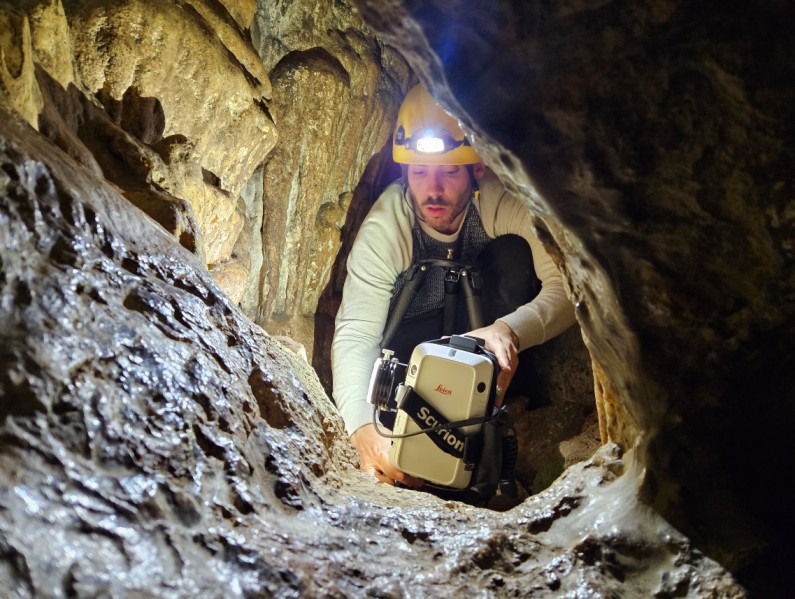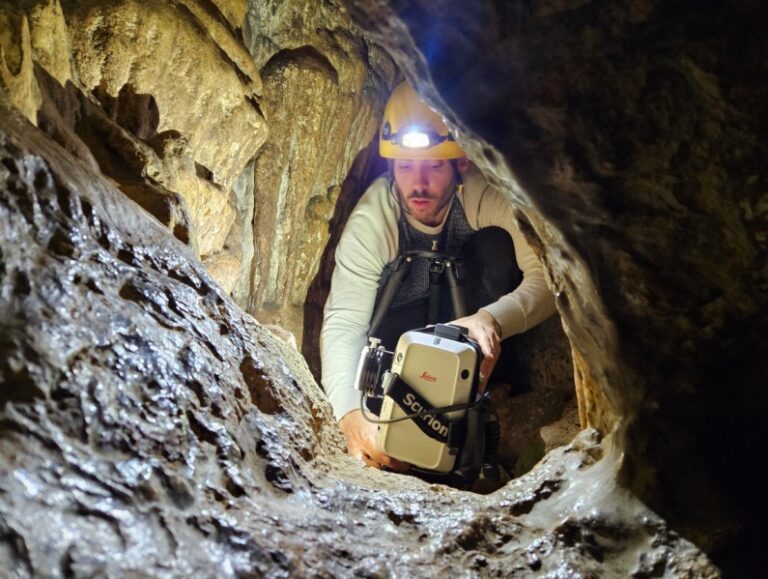An investigation of the rock paintings in the Cova del Tabac, a UNESCO World Heritage site
The team from the Digital Mapping and 3D Analysis Laboratory at the Centro Nacional de Investigación sobre la Evolución Humana (CENIEH) has collaborated with archaeologists from the Centre d’Estudis del Patrimoni Arqueològic de la Prehistòria (CEPAP-UAB), at the Autonomous University of Barcelona, in investigating the assemblage of rock paintings in the Cova del Tabac (Camarasa, Lleida), by applying 3D methods combined with hyperspectral cameras.
In order to conduct this work, a cutting-edge laser scanner and photogrammetric surveys were used to yield a 3D color capture of the cave, and a hyperspectral camera was directed at the panels of rock paintings.
The 3D color models served to study the speleological formations in the cavity through virtual techniques, and to explain how the rock paintings were adapted to the morphology of the rock.

The images from the hyperspectral camera made it possible to evaluate whether there were new rock paintings invisible to the human eye, as this instrument can record hundreds of bands from the electromagnetic spectrum, many of them within the infrared, unlike the sensors in ordinary cameras that only capture the colors of the visible spectrum in three bands (red, green and blue).
“These images were processed using statistical and hyperspectral analysis tools, enabling us to see whether there were new traces of ocher, a natural red pigment which was used to paint this assemblage of rock art,” explain Alfonso Benito Calvo and Adrián Martínez Fernández.
World Heritage
The Cova del Tabac, situated near the top of a rocky escarpment in the Sierra del Mont-Roig over 450 m high, was declared to be a UNESCO World Heritage site in 1998, and is also a Cultural Asset of National Interest and an Archaeological Zone of Spanish Historical Heritage, because of its manifestations of rock art.
This research forms part of the project awarded by the Dirección General de Patrimonio Cultural y Bellas Artes of the Ministerio de Cultura y Deporte, under its line of ‘Grants for projects of preservation, protection and dissemination of Assets that have been declared World Heritage sites’, for the year 2023. The project is promoted by the Ayuntamiento de Camarasa. The archaeological work is in collaboration with the Departamento de Cultura of the Generalitat de Catalunya.

Press release from the Centro Nacional de Investigación sobre la Evolución Humana – CENIEH



